Final Report: Taking It to the People: 2019 Summit on the Value of Galleries, Libraries, Archives and Museums
Message from the Librarian and Archivist of Canada, the Vice-President of the Canadian Museums Association Board of Directors, and the CEO of Bibliothèque et Archives nationales du Québec
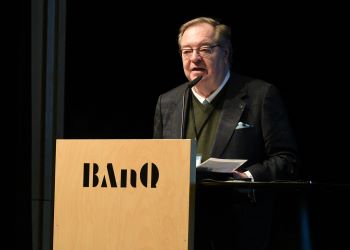 Guy Berthiaume, Librarian and Archivist of Canada
Guy Berthiaume, Librarian and Archivist of Canada Over the past three years, we have had the privilege of experiencing a series of dynamic Summits that have acted as launching pads for collaboration and intellectual exchanges that strengthen the GLAM sector. Repositioning GLAMs in the digital era is a great challenge but one that can be met with strength through a collective approach.
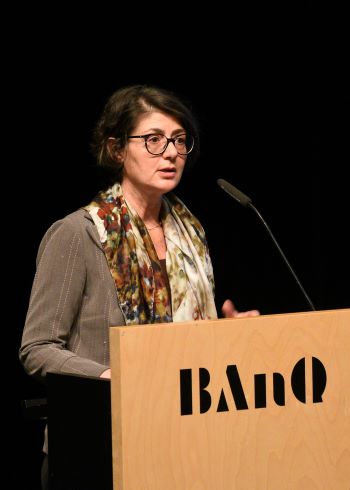 Katy Tari, Vice-President of the
Katy Tari, Vice-President of the
Canadian Museums
Association Board of Directors During our first Summit in 2016, we focused on the urgent need to demonstrate the value of galleries, libraries, archives, and museums to the public. At that time, we were often faced with a lack of awareness and even misunderstanding on the part of public leaders and decision-makers as to the work and value of our institutions. We encountered a general belief that our physical presence was irrelevant in the digital era, when in fact our facilities were experiencing historic increases in visits. We had been told that our mandates were outdated, when our institutions had in fact been undergoing a dynamic evolution in how they support societal development.
To counter such beliefs and demonstrate solidarity in the face of our common challenges, participants of the 2016 Summit adopted the Ottawa Declaration. This declaration is an expression of our commitment to increase collaboration among our institutions, develop opportunities to engage citizens in our activities, and expand access to our collections in order to contribute to the public good.
To keep the momentum going after the first Summit, the Ottawa Declaration Working Group was created to explore and study how GLAMs bring value to Canadian society, and to help identify partnering opportunities. One of the main deliverables identified by the Ottawa Declaration Working Group at its inception was to create a study on the value of the GLAM sector that encompasses the realities of our various institutions.
At our second Summit in 2018, we discussed the pressing need to create a collective narrative that expresses the value and breadth of the benefits of GLAMs to society. The Ottawa Declaration Working Group has since identified the foundational elements for our narrative, which have been incorporated into the conclusion of this report. We believe this narrative will inspire us in our collaborative efforts, and promote understanding of the value our institutions bring to the public.
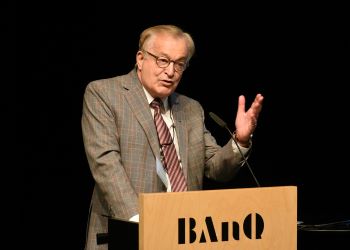 Jean-Louis Roy, Chief Executive Officer,
Jean-Louis Roy, Chief Executive Officer,
Bibliothèque et Archives nationales du Québec This report highlights key themes from the 2019 Summit, recaps the preliminary findings from the GLAM value study and the feedback we heard, and concludes with the GLAM narrative, developed over the past two years and based on our many exchanges.
Our third Summit will certainly not be the last time we will see each other. Still, it was a fitting conclusion to this phase of our work together as GLAMs. The connections made and experiences shared over the course of the past three Summits will continue to inspire us as we move forward to develop more and greater innovative collaborations among our institutions, and to strengthen cohesion within our sector.
Acknowledgements
The study on the value of GLAMs was made possible thanks to the financial contributions of Canadian Heritage, the McConnell Foundation, and Ms. Rosamund Ivey.
Synopsis
The co-chairs of the Ottawa Declaration Working Group invited members of the GLAM sector to join them in a third Summit, entitled "Taking It to the People," held on May 13, 2019. Building on the success of the first two Summits on the value of GLAMs held in 2016 and 2018, this 2019 Summit, hosted at the Bibliothèque et Archives nationales du Québec in Montréal, brought together practitioners and experts to engage in a day of discussion that focused on the following three areas:
- Collaboration: What can the Quebec experience of innovative partnerships teach GLAMs about the benefits, challenges, and actionable strategies involved with collaborating within the GLAM sector and across sectors?
- First Nations, Inuit, and Métis Nation: How can GLAMs work more closely with Indigenous communities and individuals to renew relationships that are based on mutual understanding and respect?
- Technology: How can GLAMs collaborate with technology partners to improve user experience?
In addition, the Ottawa Declaration Working Group invited Oxford Economics Inc. to present an overview of the initial findings of the value study on GLAMs, whose delivery is expected in the fall of 2019. The presentation was followed by breakout sessions during which participants discussed the initial findings.
The Summit welcomed over 280 participants, and the event was livestreamed to accommodate participants who were unable to attend in person. The associated hashtag #GLAM2019 was trending all day, making it to second place in Montréal's top-trending Twitter themes. The event was also promoted via Instagram and Facebook.
Value Study on GLAMs
"No one will protect what they don't care about and no one will care about what they have never experienced." — Sir David Attenborough, quoted by Cloé St-Cyr
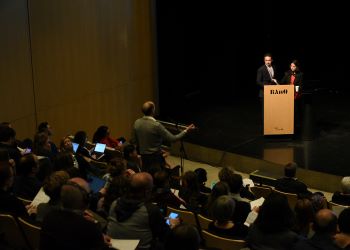
Andrew Tessler, Head of Consultancy for Australasia, and Alice Gambarin, Senior Economist, Oxford Economics Inc.
At this year's Summit, Oxford Economics Inc. shared the preliminary findings of its national value study on GLAMs, identified as a key deliverable by the Ottawa Declaration Working Group. Following the presentation of preliminary findings, attendees had the unique opportunity to help shape the next steps of the study's development by offering their feedback. The success of this study depends on the participation of the GLAM community, both during feedback sessions and during the data collection phases of the study. The Ottawa Declaration Working Group is grateful for comments received during the Summit.
In their presentation, the Oxford Economics Inc. research team described the methods employed to assess value:
- Travel Cost Model (to measure how much time and money people invest in transportation in order to access GLAMs)
- Consumer Surplus (to measure the difference between what consumers pay to access GLAMs and the maximum price they say they would be willing to pay)
- Contingent Valuation (to put an economic value on goods that are not ordinarily bought and sold in the marketplace)
- Multi-Criteria Analysis (to determine the broader societal value of GLAMs).
The research team summarized findings from their preliminary analysis of statistical data from a sample of GLAMs and from a survey of 2,045 Canadians conducted in early 2019. Initial survey results demonstrate that respondents value GLAMs highly. Furthermore, current GLAM users reported overall better health and well-being, and were more likely to volunteer in their communities and to know their neighbours, than past GLAM users and non-users.

Hamilton Galloway, Head of Consultancy for the Americas, Oxford Economics Inc., and Chris Kitzan, Director General, Canada Aviation and Space Museum
The presentation was followed by three breakout sessions, during which participants provided feedback on the initial findings and discussed ways in which GLAMs communicate value to policy makers and funders, communicate value to customers, and measure their own value. The feedback was wide ranging and included such issues as the need to translate GLAMs' value into terms that elected officials can appreciate, recognizing the distinction between GLAMs as service providers and GLAMs as organizations that foster community, and a call for GLAMs to question their traditional data collection methods. Additionally, concerns were raised over the quantitative nature of the study's methodology, ensuring good geographical representation in the data, making sure that individual types of GLAMs are accurately represented in the final analysis. All of the feedback received during the presentation and breakout sessions was noted in detail and will be taken into consideration during the next steps of the study's development. The Ottawa Declaration Working group also committed to providing a renewed opportunity for GLAMs to contribute data to the study after the Summit.
This will be the first time that a study of this scope—covering the entire GLAM sector—will have been conducted in Canada.
In addition to the value study, the Ottawa Declaration Working Group recently conducted a survey on collaborative projects in the Canadian GLAM sector. The survey results will populate a project inventory—a valuable tool that will be available this fall (see
Annex B: GLAM Collaboration Survey for more details).
Cross-Cutting Themes
Over the course of the Summit, a number of cross-cutting themes emerged. Representatives from GLAMs shared their goal of reimagining traditional forms of collaboration, bolstering GLAMs' work as agents of social cohesion in a time of growing ideological fragmentation, and embracing agility as GLAMs find new ways to innovate.
Interdisciplinary Collaboration
"We can accomplish more together than working in silos." — Charles Eckman
Collaboration was again a consistent theme throughout the day's event, as it was during the first two Summits. However, this year's event saw a desire to move beyond traditional ways of working together in order to foster a culture of collaboration that will allow GLAMs to meet public needs in effective and sustainable ways.

Nathalie Bondil, Director and Chief Curator, of the Montreal Museum of Fine Arts

Marie Martel, Éric Lefebvre, Stéphan La Roche, Jean-Jacques Lachapelle
In her keynote address, Nathalie Bondil called for interdisciplinary over multidisciplinary collaboration, which requires breaking away from a siloed approach to collaboration and synthesizing links among disciplines to create coordinated, coherent approaches. Opting for interdisciplinary collaboration, Nathalie argued, allows GLAMs to be more effective in their social engagement. She promoted co-creation among local institutions, cities, and provinces, as well as working with subject-matter experts as ways of ensuring higher levels of success for collaborative projects.
Éric Lefebvre illustrated the power of interdisciplinary collaboration with his example of the Jardins Gamelin. This collaborative project involving the Quartier des spectacles, Pépinière & Co. (a non-profit urban design group), and Sentier Urbain (an urban agriculture collective) sought to address complex social problems in downtown Montréal by transforming a square into a vibrant park and cultural venue. According to Éric, collaboration across sectors led to a better understanding of the public and their needs.

Charles Eckman, Dean of Libraries, University of Miami
Indeed, several speakers emphasized the need for more interdisciplinary collaboration. Charles Eckman recognized that breaking down silos can be challenging for institutions, and recommended gradual socialization and engagement with employees as ways to foster an internal culture of collaboration. He also suggested that risk aversion—both internally and among partners—can be mitigated by clarifying expectations and goals. Furthermore, by continually coming back to the user's perspective and prioritizing user needs, collaborative partners can find common ground as they work out project details.
Karon Shmon offered valuable insights into collaborating with First Nations, Inuit, and the Métis Nation. She emphasized the need for building authentic relationships with the Indigenous communities and she encouraged tenacity over skepticism, reminding listeners that working together successfully takes time. Other advice Karon gave included co-developing with Indigenous peoples from the beginning, building a relationship around non-controversial activities like breaking bread together, and ensuring that projects benefit all parties involved.
GLAMs as Agents of Social Cohesion
"La démocratie est, en profondeur, l'organisation de la diversité [Democracy is, fundamentally, the organization of diversity]." — Edgar Morin, quoted by Nathalie Bondil
The past three Summits have explored the various ways in which GLAMs bring value to Canadian society. They have discussed the fundamental role GLAMs play in the world of culture by providing access to materials, fostering creativity, and building connections. The Summits have also explored GLAMs' role as trusted sources of information that affects public discourse, debate, and our understanding of history.
As Guy Berthiaume noted in his opening remarks, one of the primary goals of GLAMs today is democratizing culture—but achieving this goal is becoming increasingly challenging in an era defined by ideological fragmentation. Nathalie Bondil addressed this fragmentation in her keynote by asking us to consider art—and by extension GLAMs—as forces of social cohesion. She maintained that GLAMs have an important role to play in reuniting differing views on core values, and echoed the claim that Senator Patricia Bovey made during the second Summit that GLAMs are in a unique position to present multiple views on issues that affect individuals and communities. What's more, GLAMs can give a voice to those who need it, effectively "expanding the social orchestra" in an attempt to make sense of what is happening in the world. Similarly, Karon Shmon echoed the importance of balanced representation within GLAMs' collections, warning against groups being misrepresented, omitted, left-out, or excluded (MOLE).
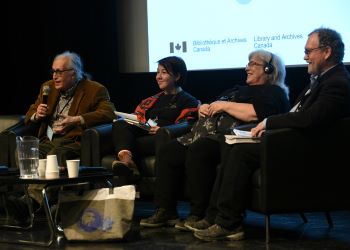
André Dudemaine, Oliva Lya Thomassie, Karon Shmon, Louis Gagnon
During the second panel of the Summit, Oliva Lya Thomassie and Louis Gagnon shared the many ways in which the Avataq Cultural Institute supports social cohesion in the North by offering a strong foundation for the living culture of today's Inuit. The goal of this institute is to ensure that Inuit culture and language continue to thrive into the future, so that descendants can benefit from the rich heritage passed down through the wisdom of ancestors. Some of the initiatives discussed that support this goal include publishing books and magazines in Inuktitut, collaborating with local artists, and returning cultural objects that were in the South to their communities of origin.
Embracing Agility
"Take the risks. Be prepared to fail because you can't know what works until you find out what doesn't work. And so, not everything will be a success, nor should it be expected that you have 100% success." — Karon Shmon
A third cross-cutting theme from this year's Summit relates to embracing agility in the development of collaborative projects. Throughout the course of the day, speakers continually emphasized the benefits of embracing new and flexible approaches to the governance of collaborative projects, as well as the agile development of products and initiatives.
During the first panel, speakers promoted shared governance within collaborative projects, which involves collective goal setting and problem-solving processes built on trust and communication. Speakers recognized that governance within collaborative projects can pose a big challenge for GLAMs, given their traditional approval processes and project funding structures. Still, they encouraged participants to explore new organizational models and to reinvent how teams and divisions are structured in order to experiment with novel ways of functioning. Speakers emphasized that experimentation requires openness, sharing, and good communication among project partners.
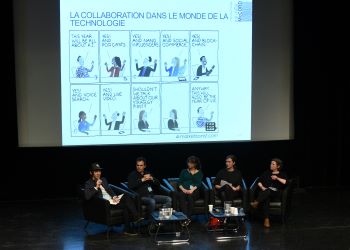
Eric Chan, Mathieu Ferland, Claire Paillon, Cloé St-Cyr, Mélanie Deveault
Taking an agile approach to project development was also discussed in later presentations. During the Summit's third panel, Cloé St-Cyr and Claire Paillon argued that when working with technology-based projects, prototyping is key to success. Prototyping is an iterative process that allows project owners to test the functionality and usefulness of what they are developing, and then rework it based on feedback received during testing. These iterative processes involve "failing fast," whereby iterating fast failures achieves a desired result more quickly than perfecting the solution. Speakers on the panel recognized that failing fast can be challenging for GLAMs. In response, they suggested consulting experts in other sectors to learn about alternative ways of envisioning projects, creating frameworks that allow partners to part ways at any point during the project development process, and maintaining a high degree of transparency throughout the collaboration.
Conclusion
Over the course of the past three Summits, we have explored the current state of research on the social and economic value of memory institutions, and have shared our experiences working together, to strengthen collaboration within the GLAM sector. What's more, we have striven to define the contours of a foundational narrative that articulates the many ways that GLAMs provide value to Canadian society.
After much discussion and exchange, the Ottawa Declaration Working Group has identified the foundational elements for a narrative that it hopes will support the entire GLAM sector. The goal of this narrative is to demonstrate the value and breadth of the social benefits of GLAMs. This narrative is presented below, with the hope of inspiring the GLAM community in its continued collaboration.
Our shared experiences at the past three Summits—as well as the efforts of the Ottawa Declaration Working Group in carrying out the GLAM value study, creating a collaborative project inventory, and developing a GLAM narrative—have helped illuminate the economic and social importance of our sector. As we continue to experience a conceptual shift that envisions an ecosystem of GLAMs rather than a collection of individual sectors, we embrace the philosophy that the sum is greater than the parts.
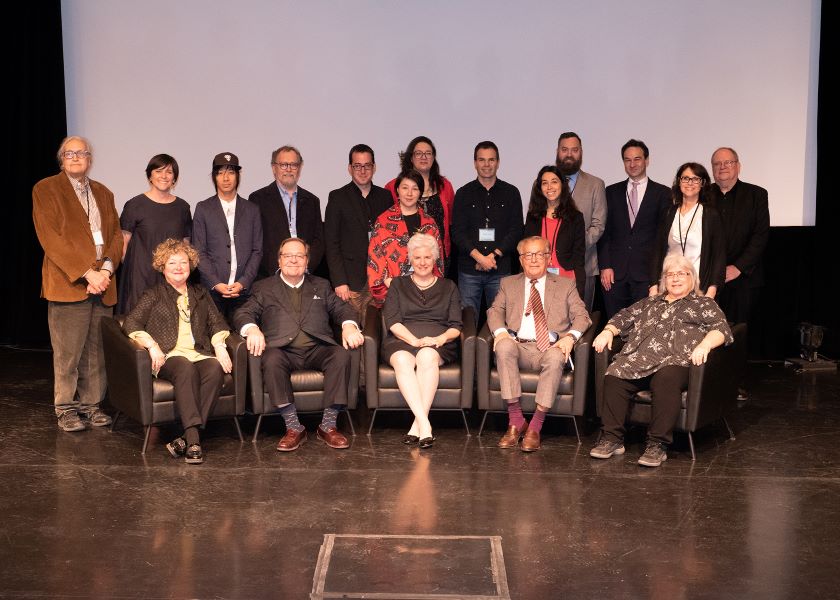
André Dudemaine, Pascale Robichaud, Eric Chan, Louis Gagnon, Éric Lefebvre, Oliva Lya Thomassie, Sarah Déraps, Mathieu Ferland, Alice Gambarin, Hamilton Galloway, Andrew Tessler, Marie Martel, Charles Eckman, Marie G. Lalonde, Guy Berthiaume, Hélène Laurendeau, Jean-Louis Roy, Karon Shmon
Presenting the GLAM Narrative
A Rapidly Changing World Needs GLAMs
We are living in a digital age where instant information is an everyday occurrence. It forms the fabric of today's society. In this new landscape, trusted information sources are more vital than ever. Therefore, the economic and social importance of Galleries, Libraries, Archives, and Museums (GLAMs) is undeniable. It is also demonstrable. Using innovative, collaborative approaches to today's information challenges, GLAMs are pillars for building tomorrow's society and gateways to accessing and understanding our collective past.
1. People turn to GLAMs for the credible and trusted information they want and need.
GLAMs remain the most trusted of public institutions.
In this era of competing and confusing stories, a unique contribution of GLAMs is to provide highly credible, balanced, diversified, and multi-faceted information about the world we live in. GLAMs enhance and support culture, research, creativity, and lifelong learning. GLAMs are key contributors to contemporary dialogue on topics of significance, help Canadians decode the evidence of their past, and provide signposts to navigate the complexity of the present.
2. People connect, experience, and write their stories together in and with GLAMs.
In the digital landscape, connection can paradoxically be a challenge. GLAMs are inclusive physical and virtual spaces where people connect with and understand each other.
Meeting the expectations of an active and informed public, GLAMs are enhancing visitor experiences, and at the same time, they reach out to audiences wherever they are. They are using new technologies to provide unprecedented public access to documentary heritage and collections, and directly involving the public in the development of and access to collections. In and with GLAMs, people can forge their common and unique identities. GLAMs connect citizens, institutions, levels of government, and countries.
3. GLAMs help Canada prosper and innovate.
The GLAM sector creates a synergy whose contribution to Canada's economy is greater than the sum of its parts.
GLAMs are economic engines that power smart, creative communities. GLAMs act as a lever to expand and enhance economic activities and creative cultural districts. These institutions inspire entrepreneurs and artists in addition to attracting tourists. They are incubators for innovation and creativity of all kinds, while creating jobs across the country.
4. GLAMs make citizens and communities better.
GLAMs enrich lives, and are foundational to personal and community growth and regeneration.
Access to the arts, knowledge, and cross-cultural heritage favours greater emotional awareness, compassion, resilience, and openness to ideas that differ from our own. GLAMs inspire us to use the past to understand the present and go forward into the future.
Annex A: Summit Agenda

A Summit hosted by the Ottawa Declaration Working Group, in collaboration with Library and Archives Canada, Bibliothèque et Archives nationales du Québec and the Canadian Museums Association
Grande Bibliothèque
Bibliothèque et Archives nationales du Québec
475 boulevard de Maisonneuve Est, Montréal, Québec H2L 5C4
Monday May 13, 2019
8:15 a.m. – 7:30 p.m.
8:15 – 8:55 a.m.: Registration and Networking
- Registration
- Tour Sign Up
- Coffee/Tea and Pastries
9:00 – 9:15 a.m.: Welcome and Opening Remarks
- Jean-Louis Roy, Chief Executive Officer, BAnQ
- Katy Tari, Vice-President of the Canadian Museums Association Board of Directors
- Guy Berthiaume, Librarian and Archivist of Canada, Library and Archives Canada
9:15 – 9:25 a.m.: Keynote Address
Andy Fillmore, Parliamentary Secretary to the Minister of Canadian Heritage and Multiculturalism
Introduction: Guy Berthiaume, Librarian and Archivist of Canada, Library and Archives Canada
9:25 – 10:15 a.m.: Keynote Address: "Rethinking Art as a Force for Social Cohesion"
Nathalie Bondil, Director and Chief Curator, Montreal Museum of Fine Arts
Introduction: Hélène Laurendeau, Deputy Minister of Canadian Heritage
10:15 – 11:15 a.m.: Panel I: Quebec Experience
This session will highlight the Quebec experience in sharing insights, benefits and lessons learned from innovative partnerships or approaches, and provide actionable strategies.
- Moderator: Geneviève Rossier, Director of Communications, Programming and Education, BAnQ
- Éric Lefebvre, Director of Development, Quartier des spectacles Partnership
- Jean-Jacques Lachapelle, Director General of MA, Musée d'art de Rouyn-Noranda
- Stéphan La Roche, Director General, Musée des civilsations de Québec
11:15 – 11:30 a.m.: Health and Networking Break
Coffee/Tea
11:30 – 12:30 p.m.: Panel II: GLAMs and Indigenous Peoples
This session will look at how galleries, libraries, archives and museums can work more closely with Indigenous communities and individuals to renew relationships that are based on mutual understanding and respect.
- Moderator: André Dudemaine, Founder and Director of
Terres en vues and of the Festival
Présence autochtone de Montréal
- Louis Gagnon, Curator and Director of the Department of Museology, Avataq Cultural Institute
- Oliva Lya Thomassie, Arts Aumaaggiivik Secretariat, Avataq Cultural Institute
- Karon Shmon, Director of Publishing, Gabriel Dumont Institute of Native Studies and Applied Research
12:30 – 1:30 p.m.: Networking Lunch (provided)
- Lunch
- Tours of exhibitions, starting at 12:30 p.m. and 1:00 p.m. (Sign up at registration)
- BAnQ's gift boutique will be open during lunch
1:30 – 2:15 p.m.: Keynote Address
Charles Eckman, Dean and University Librarian, University of Miami
Introduction: Marie G. Lalonde, Executive Director, Ontario Museum Association
2:15 – 3:20 p.m.: Presentation
Presentation of the Value Study* on Galleries, Libraries, Archives, and Museums and Breakout Sessions
Oxford Economics Inc., Andrew Tessler and Alice Gambarin
Presentation (25 min)
Oxford Economics will present an overview of the initial findings of the value study on galleries, libraries, archives, and museums.
Breakout Sessions (40 min)
Following the presentation by Oxford Economics, participants will break into groups to discuss the preliminary findings of the study on the value of galleries, libraries, archives and museums.
3:20 – 3:40 p.m.: Health and Networking Break
Coffee/Tea
3:40 – 4:05 p.m.: Plenary Session
Plenary Session on the Value Study on Galleries, Libraries, Archives and Museums
Oxford Economics Inc., Andrew Tessler and Alice Gambarin
4:05 – 5:05 p.m.: Panel III: Collaboration in the World of Technology
This session will look at how galleries, libraries, archives and museums can collaborate with technology partners to improve the user's experience.
- Moderator: Eric Chan, EEPMON
- Mathieu Ferland, Senior Producer, UBI Soft
- Cloé St-Cyr, Multimedia Director, Moment Factory
- Claire Paillon, Telepresence Coordinator, Société des arts technologiques
- Mélanie Deveault, Head, Educational, Citizen and Cultural Action, McCord Stewart Museum
5:05 – 5:30 p.m.: Closing Remarks
- Jean-Louis Roy, Chief Executive Officer, BAnQ
- Guy Berthiaume, Librarian and Archivist of Canada
5:30 – 7:30 p.m.: Networking Reception and Cocktail
* The Study on the Value of Galleries, Libraries, Archives, and Museums was made possible thanks to the financial contributions of Canadian Heritage, McConnell Foundation and Ms. Rosamund Ivey.

Annex B: GLAM Collaboration Survey
Overview
In 2018, the Ottawa Declaration Working Group identified the need for an inventory of collaborative projects within the GLAM sector, and between GLAMs and non-sector partners. To create such an inventory, the working group developed and conducted the 2019 GLAM Collaboration Survey. Based on survey responses, an inventory of collaborative projects will be available to the GLAM community in the fall of 2019. It is the Ottawa Declaration Working Group's hope that this inventory will facilitate the sharing of project ideas and best practices, and contribute to the building of successful collaborations within the sector.
The survey was conducted in early 2019 and the response from the community was enthusiastic: 52 institutions shared 130 inspiring collaborative projects. These initiatives, involving 469 partners, portray the dedicated work done by GLAM organizations to serve their diverse communities.
Examples of Collaborations
The following two examples of collaborations showcase the benefits of interdisciplinary collaboration, and demonstrate ways in which GLAMs act as agents of social cohesion.
Native Kids Ride Bikes
The Dunlop Art Gallery/Regina Public Library, in partnership with the MacKenzie Art Gallery, invited artist Dylan Miner to create a community-based art installation in collaboration with local artists and youth. The installation is based on Dylan's
Anishnaabensag Biimskowebshkigewag (Native Kids Ride Bikes) series.
Dylan Miner mentored four local artists, who then each engaged with a community group in the creation of a collaborative low-rider bike. The decoration of the bikes incorporated materials and teachings from various Indigenous cultures.
Working with other GLAMs allowed institutions to serve broad communities in innovative and impactful ways. It also allowed them to build vital bridges between their institutions, as well as between artists and the community, that shine light on the intersections and commonalities of our cultural experiences.
Vancouver Inspiration Pass
The Vancouver Inspiration Pass provides free access for Vancouver residents to cultural, heritage, and recreational experiences such as galleries, museums, and parks. This collaboration involves 27 partners, including the Vancouver Public Library, the Beaty Biodiversity Museum, the Chinese Canadian Military Museum, the Jewish Museum & Archives of BC, the Roedde House Museum, the Museum of Anthropology at UBC, the Museum of Vancouver, the Vancouver Art Gallery, the Vancouver Maritime Museum, the Vancouver Police Museum, and Science World.
Every two weeks, 140 passes are loaned to cardholders of the Vancouver Public Library (VPL) and are valid for a two-week period. This program leverages VPL's sharing infrastructure to enable access to Vancouver-based experiences for residents who could not or would not otherwise attend these venues.
In 2015, VPL also launched the Community Inspiration Pass program with 40 dedicated passes for library staff to use with community organizations and individuals facing access barriers such as low-income families and youth. Generous in-kind contributions from the program's community partners demonstrate a strong commitment to increasing access and informal learning opportunities for Vancouver residents. In addition to showcasing Vancouver's cultural, heritage, and recreation venues, the Inspiration Pass program aims to increase a sense of connectedness within the community.
Collaboration Survey Findings a Glance
Figure 1: Survey respondents by institution type
Figure 1 - Text version
Survey respondents by institution type
Non-GLAMs 4
Institutions combining different types of GLAMs 9
Museums 14
Archives 2
Libraries 23
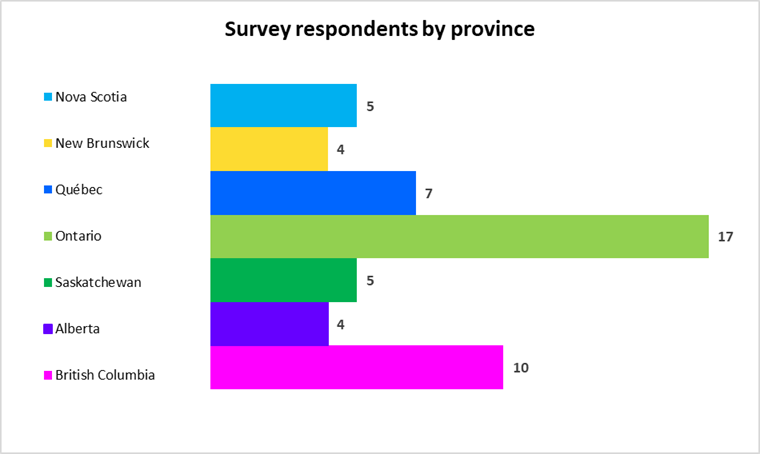
Figure 2 - Text version
Survey respondents by province
Nova Scotia 5
New Brunswick 4
Québec 7
Ontario 17
Saskatchewan 5
Alberta 4
British Columbia 10
Note: For international organizations and for those with branches in more than one province, the location of the head office is represented here.
Figure 3: Partners in GLAM collaboration projects by type of organization
Figure 3 - Text version
Partners in GLAM collaboration projects by type of organization
Galleries 21
Libraries 106
Archives 26
Museums 170
Institutions combining different types of GLAMs 47
Non-GLAMs 99
Note: Institutions are counted every time they participated in a project.
Figure 4: Partners in GLAM collaboration projects by province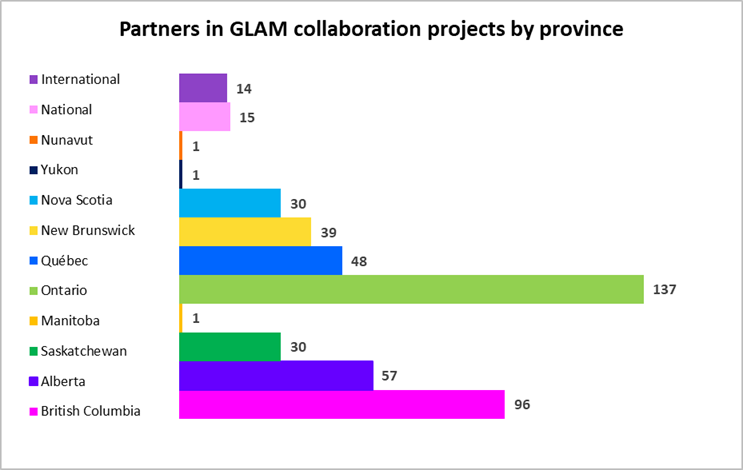
Figure 4 - Text version
Partners in GLAM collaboration projects by province
International 14
National 15
Nunavut 1
Yukon 1
Nova Scotia 30
New Brunswick 39
Québec 48
Ontario 137
Manitoba 1
Saskatchewan 30
Alberta 57
British Columbia 96
Note: Institutions are counted every time they participated in a project.
Figure 5: GLAM Collaboration Survey
Figure 5 - Text version
Ottawa Declaration Working Group
Survey of collaborative projects in galleries, libraries, archives and museums
Diagram of project topics, formats, partners and audiences (text version)
Project formats:
Exhibitions
Exhibit pass lending
Educational projects
Online exhibits
Pop-up exhibits
Digital repository
Social media
Digitization
Smart app
Ontology
Shared access
Shared cataloguing
Online search tool
Online archive
Joint facilities
TV series
Conferences
Readings
Film screenings
Crowdsourcing
Publications
Project topics:
Science
Paleontology
Women scientists
Space exploration
Repatriation
Truth and reconciliation
Indigenous heritage
Civic literacy
Community
Urban development
Regional history
Military history
Genealogy
Storytelling and folklore
Ecology
Pollinator gardens
Food literacy
Outdoor activities
Literature
Poetry
Visual arts
Fashion and textile
Types of partners:
Writers
Poets
Teachers
Students
Universities
Research centre
Indigenous Peoples
Indigenous organizations and governments
Seniors centre
Community organizations
Private businesses
Visual artists
Theatre artists
Dance artists
Opera company
Canadian National Institute for the Blind
Audiences:
Children
Teens
Seniors
Teachers
Students
Researchers
Newcomers to Canada
Low-income families
General public
Indigenous Peoples
People with visual impairment
Women in correctional settings
Small businesses
GLAM professionals